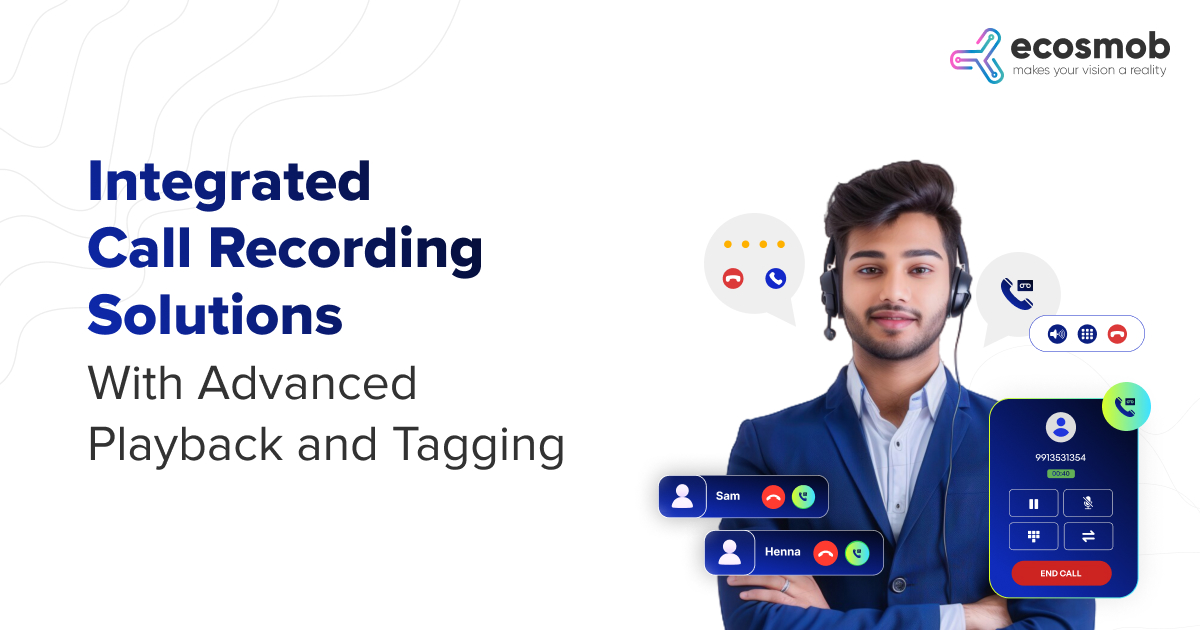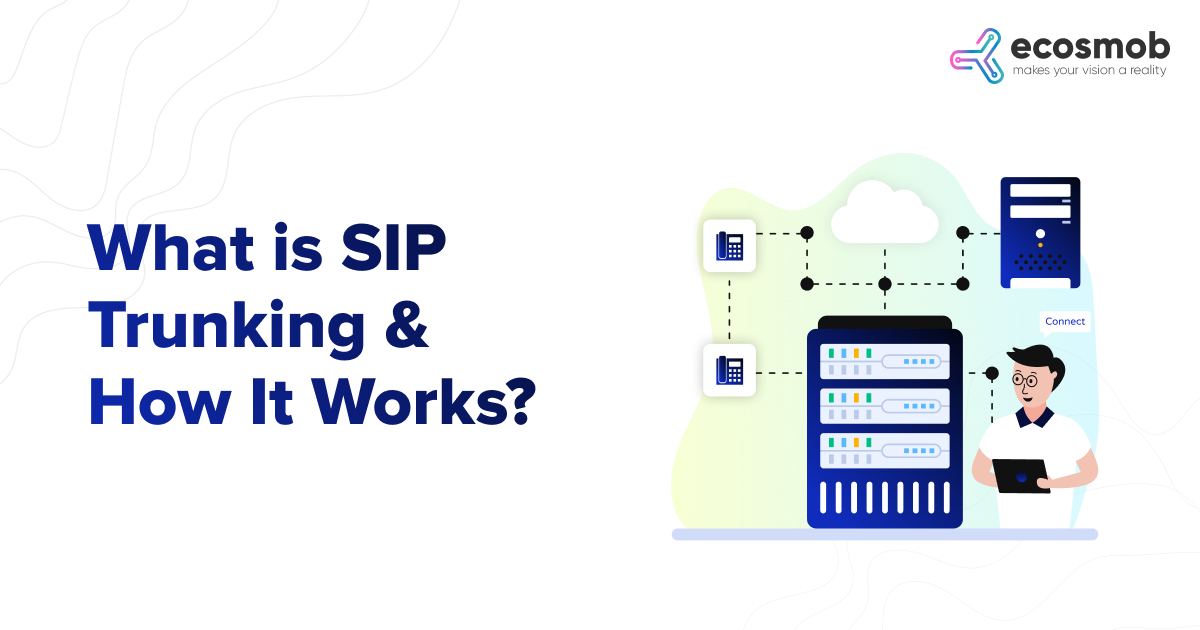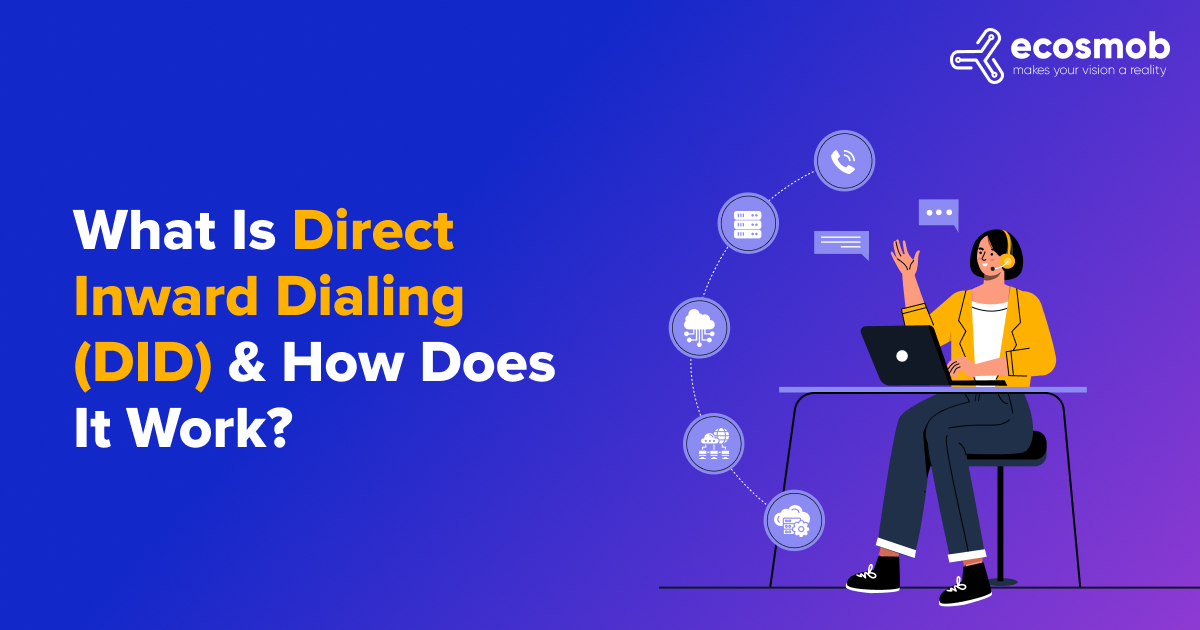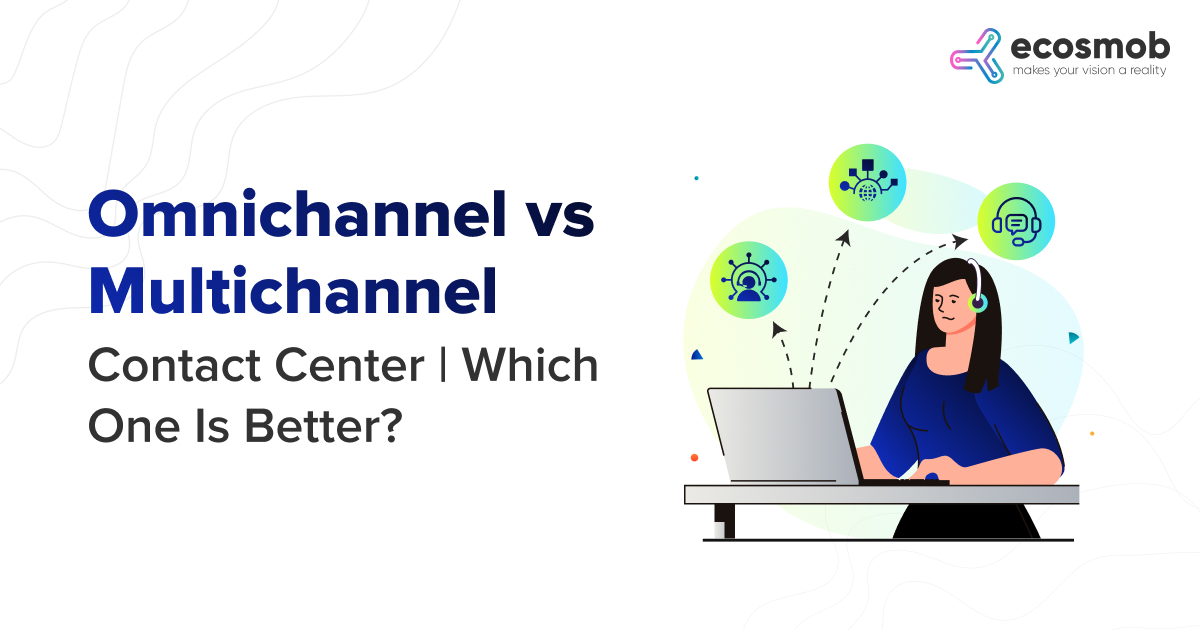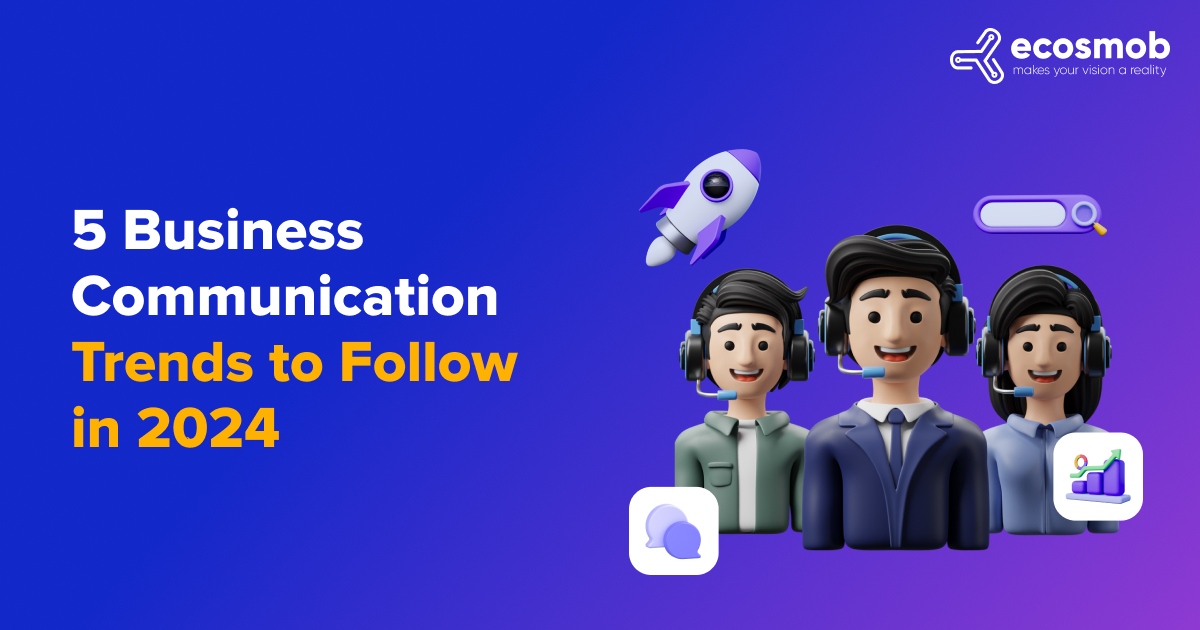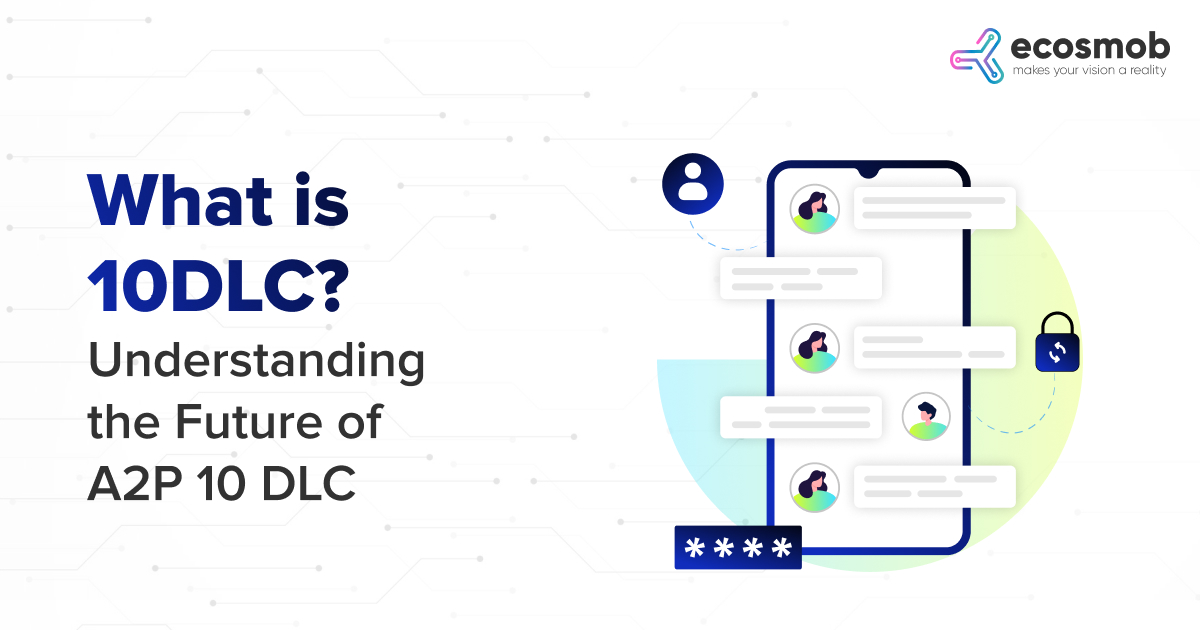Choosing the right technology stack for VoIP software development is crucial for creating a robust, scalable, and feature-rich application. A comprehensive tech stack can distinguish between a fluid user experience and a lagging application that frustrates customers.
VoIP technology allows voice communications and multimedia sessions over an internet protocol (IP) network. More and more prospective buyers are now relying on VoIP over other services. [Source: Software Advice] This makes your choice of VoIP technology stack even more crucial.
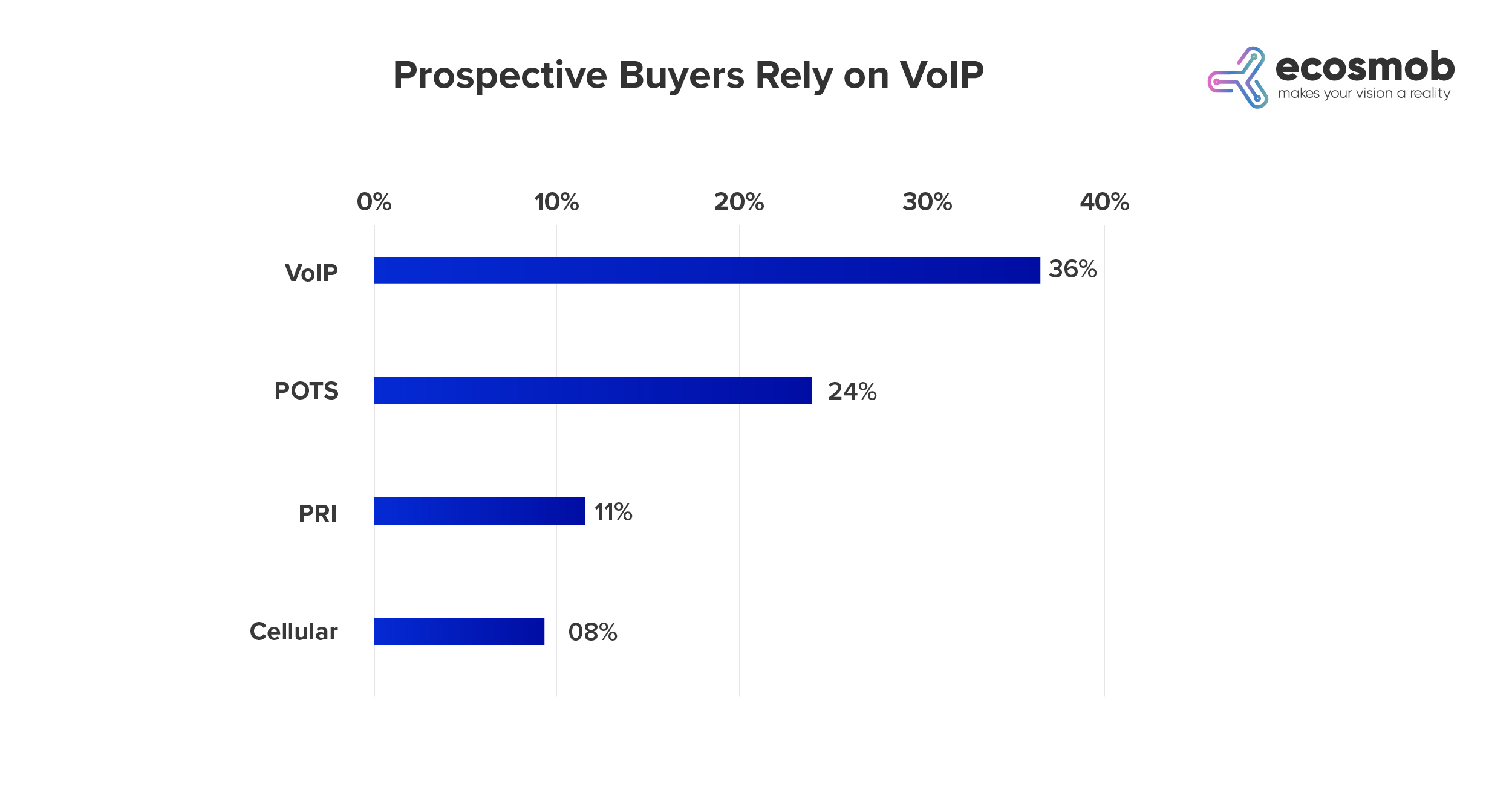 By choosing an effective technology stack for your VoIP software, you can provide seamless services, gain a competitive edge, and maintain a scalable and sustainable business model.
By choosing an effective technology stack for your VoIP software, you can provide seamless services, gain a competitive edge, and maintain a scalable and sustainable business model.
Understanding the Basics of a Technology Stack
A technology stack is a combination of software products and programming languages to create a web/mobile application. These can be divided into two major parts: the client-side (front-end) and the server-side (back-end).
The tech stack for VoIP software often comprises real-time communication protocols, voice compression codecs, web and mobile application frameworks, databases, server technologies, and VoIP platforms.
Essential Components for a VoIP Software Technology Stack
Real-Time Communication Protocols
Session Initiation Protocol (SIP) and Real-Time Transport Protocol (RTP) are vital for initiating, maintaining, and terminating real-time sessions, including voice, video, and messaging applications.
WebRTC, an open-source and complimentary project, equips web browsers and mobile applications with real-time interaction capabilities through straightforward APIs. It allows for the development of rich, high-quality RTC applications to be developed in the browser, simplifying the process significantly.
Codecs
Codecs like G.711, G.722, G.729, or Opus are used for voice compression and decompression, reducing bandwidth consumption while maintaining call quality.
Programming Languages
Python, known for its simplicity and readability, and Java, renowned for its robustness, are often chosen for their strong multithreading and concurrency support.
Web and Mobile Frameworks
Web frameworks like Angular and Node.js are popular for front-end and back-end development. For mobile app development, cross-platform frameworks like Flutter or React Native can deliver efficient and consistent performance across different platforms.
Databases
SQL databases such as MySQL or PostgreSQL are typically used for managing structured data. NoSQL databases like MongoDB provide scalability and flexibility for larger volumes of unstructured data.
Transform Your Communication Infrastructure With Custom VoIP Solutions.
Server Technologies
Cloud-based solutions such as Amazon Web Services (AWS), Google Cloud Platform (GCP), or Microsoft Azure offer scalability, security, and extensive tools for efficient software development.
Testing Tools
Tools like Selenium for UI testing and Apache JMeter for load testing can streamline software development, ensuring optimal performance and user experience.
VoIP Platforms
FreeSWITCH, Kamailio, OpenSIPS, and Asterisk are excellent platforms for building VoIP services.
FreeSWITCH is an open-source telephony platform designed to route and interconnect popular communication protocols.
Kamailio and OpenSIPS are high-performance SIP (Session Initiation Protocol) servers for handling voice, video, and other forms of real-time communication.
Asterisk is a freely available framework to develop communication applications with the power to convert a conventional computer into a versatile communication server.
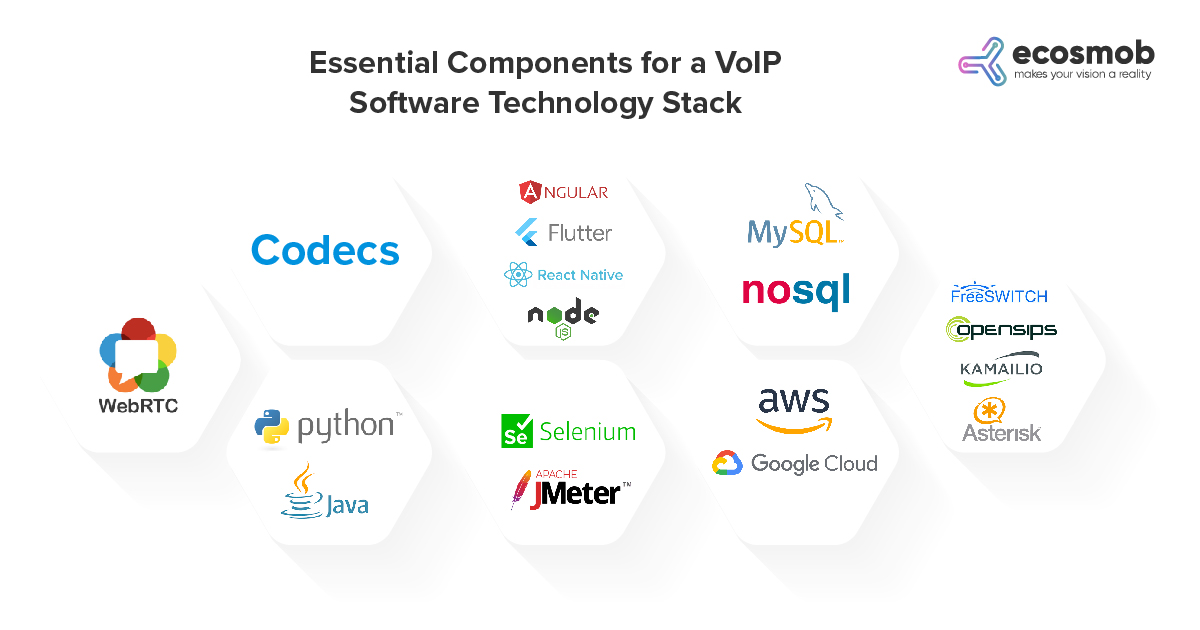 Key Considerations for Selecting the Right Tech Stack
Key Considerations for Selecting the Right Tech Stack
Scalability: The tech stack should allow your software to accommodate increasing user loads smoothly by optimizing system resources.
Performance: The chosen technologies should process large data volumes promptly and efficiently to ensure a superior user experience.
Security: With cybersecurity being paramount, opting for technologies with robust security measures to protect sensitive user data is crucial.
Community Support: Active community backing can help solve common development issues and provide insights into emerging tech trends.
Cost: Assess the overall cost, including licensing fees, maintenance costs, and resources needed for hiring skilled developers
Learn more about saving costs with your VoIP system here.
A Few Additional Technologies For Your VoIP Technology Stack
STUN/TURN Servers
These are key in VoIP applications for NAT traversal in real-time communications. They help maintain connection and communication between devices behind firewalls or with dynamic IP addresses. Examples include Coturn and ice4j.
Media Servers
These servers are crucial for processing and streaming multimedia content in real-time. Some examples are Kurento and Jitsi.
WebSockets
This particular protocol enables bidirectional communication channels via a solitary TCP connection. It is designed to be implemented in web browsers and servers but can be used by any client or server application.
Docker/Kubernetes
These are essential for deploying and scaling your VoIP applications.
Docker helps create lightweight and standalone software packages containing everything needed to run an application called containers.
Kubernetes, on the other hand, helps orchestrate and manage these containers, making the deployment and scaling of applications much more efficient.
Message Brokers
Technologies like RabbitMQ or Kafka can be used for queueing messages or calls during high traffic.
Logging and Monitoring Tools
Tools like Prometheus for real-time monitoring and alerting, Grafana for data visualization, and ELK stack (Elasticsearch, Logstash, and Kibana) for log analysis can help maintain the performance and reliability of the application.
CI/CD Tools
Continuous Integration and Continuous Deployment tools like Jenkins, CircleCI, or GitLab CI/CD can automate the software release process, making it more consistent and faster.
In Conclusion
The selection of the ideal technology stack for VoIP software development hinges on your project’s specific needs and goals. It is beneficial to seek the advice of experienced developers or software development companies to obtain tailored recommendations. With the right decision, you can have a VoIP application that caters to your current requirements and is flexible enough to adapt to future advancements.






